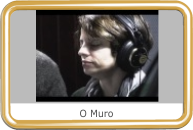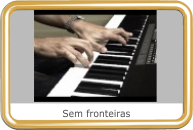The song Nós que amamos a vida is a tribute to the professionals of the international humanitarian organization Doctors Without Borders, winner of the 1999 Peace Nobel prize for its performance in the most remote and suffering areas of the planet. By composing this song and making it available for the disclosure of the entity's activities we join the group of those that fight for life - and for life only.
The lyrics are almost totally based on the information inside the donation leaflet I received in my address in the Spring of 2008.
In the melody, I tried to approach the form of the hymns, since I recognize something of epic and huge – emphasized by the hymns - on the daily works of these modern and anonym heroes known as Doctors Without Borders.
This search for the contemporary epic brought me to the work of Pink Floyd, in The wall. That was when I decided to insert parts of this record of classic progressive rock from the 70's to the composition.
On the other hand, the activities of the Doctors Without Borders are largely concentrated in Africa, a continent where the cultural music maintains a close relationship with the Brazilian music, mainly as far as the rhythm is concerned and the use of percussion – encouraging the addition of a leather quartet (alfaia, tumbadora and tambourines) to express the connections of the music with human race's mother continent.
At the time the arrangement concept was established, I chose to mention the passages of Villa-Lobos' number 6 chorus using a fragment of the theme from Canta, canta mais, (Sing, sing more) by Tom Jobim and Vinicius de Morais as well, as a reference for the song's grand-finale, which already had three parts and was on its way to become a small play recalling the pop symphonic.
This three parts structure – which I called O muro, Sem fronteiras e Canta mais (The Wall, Without Borders and Sing More) made me think of a fourth part to gather the composition's reference and serve as Opening. Based on this conception, Anderson Erthal developed the orchestration heard in the recording, with an inspired interpretation of the musicians and singers invited.
The merge of the different musical references in the work, in addition to my unrestricted admiration for the mentioned composers, sort of expresses the characteristic availability of the music and of the Brazilian musicians to absorb and process the diversity of influences, maintaining our culture perspective opened and flexible.
A relevant side of this project is the fact that it is almost entirely performed by musicians from Nova Friburgo and the Highlands of Rio de Janeiro. The Nova Friburgo valley and its neighborhood have a very intense and high level musical activity, partially responsible for the best aspects of this work's final results. The mistakes and exaggerations are entirely my responsibility.
A special reference must be made here to two institutions which were fundamental for this production: The Musical Society Euterpe Friburguense, the oldest civil symphonic band in activity in the country, since 1863, where I searched for the adult chorus voices, under the coordination of tenor and regent Ágni de Souza, and some of the instrumentalist invited, such as Gilney de Oliveira, who plays the citation of the classic solo of Pink Floyd's Another brick in the wall at the trumpet; and also the Superior School of Music of University Cândido Mendes, whose Nova Friburgo's campus created the favorable conditions for the development of musical projects such as this one. Inside the UCAM's campus I searched for some friends and cooperators for this project, which was the case of the young string quarter (nontraditional) composed by Artur Pontes (violin), Bruno Marins (viola), Caíque Abbud (bass) and Jonathan Lima (cello).
The recording of All of us, who love life started on March 25, 2009, at Midstudio and was extended up to June 24 of the same year, passing by Mateus Santos Studio, also in Friburgo, and by the studio Umuarama, in Laranjeiras, Rio de Janeiro, where we registered the children voices of Lucas, Maria, Maurício, Rita and Tainá, from the children chorus of the Musical School of Rocinha, with the regency of Valéria Correia.
During the process of recording, we also counted on the sound engineering of Gilson Wilbert, from Studio Pentatom, responsible for the direct capture of the tympanum, on the site of the Musical Society Euterpe Friburguense. At that site we performed the night capture of the large instrument with the multi-instrumentalist Piter Toledo.
In the Pentatom, I have also performed the insertion of incidental sounds and noises involved in the play, with emphasis to the songs from birds typical of the mountain region of Serra dos Órgãos. The mixing is signed by Tiquinho Santos, of Midstudio.
The recording backstage, coordinated by the photo director Sérgio Martins, of AlfaÔmega Produções, with edition by Ilson Junior, of Singularidade, originated the video version of the music, given to the directors of Doctors Without Borders to be entirely used by any means of resources capture in order to maintain the entity and its humanitarian activities.



